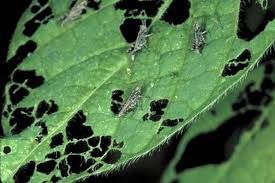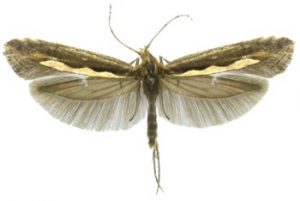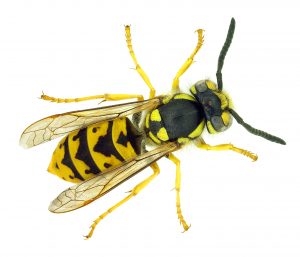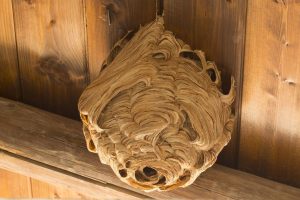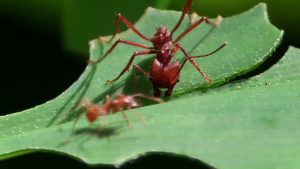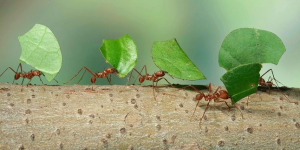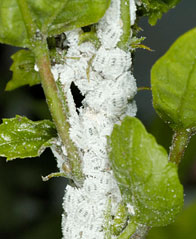For thousands of year, cotton has been a significant crop in India contributing to its rich history of textiles. Despite the agricultural legacy cotton farmer faced many challenges such as a serious pest attack impacting crop yield. 90% of the cotton farmers experienced significant crop damage due to an insect called cotton bollworm. The cotton bollworm also called corn earworm or sorghum head worm is a serious pest to the cotton plant.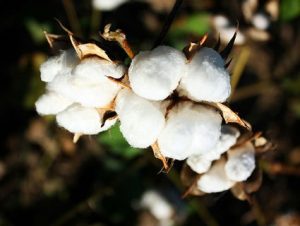
In 2002 Bt. cotton was introduced in India dramatically changing the future of cotton production in India. Bacillus thuringiensis (Bt) is a bacterium that occurs naturally in the soil and produces proteins that kill certain insects. Through biotechnology, scientists used these naturally occurring Bt proteins to develop insect-protected crops that help farmers protect against insect damage and destruction. When targeted insects eat the plant containing the protein, they ultimately die.
But in the recent years, there have been articles flooding of Transgenic Bt cotton plants that have a build up a resistance to the lethal protein and are being attacked by bollworms.
The potential of pests to develop resistance against the defense mechanisms of crops is well-known and is not unique to genetically engineered plants. Insects have developed resistance to a crop defense no matter how it was developed. The crop defense might be a chemical or biological agent, a gene already in the crop species and transferred to commercial plants by conventional plant breeding methods, or a gene introduced by recombinant DNA technology. Because more than 500 insects and mites already have acquired resistance to a number of insecticides, there is concern that similar resistance to Bt toxins could develop.
Several major pests, including the tobacco budworm, Colorado potato beetle, Indian meal moth and diamondback moth, have demonstrated the ability to adapt. It has been reported that the diamondback moth evolved high levels of resistance in the field as a result of repeated use of Bt. As Bt use increases on more acres, some scientists have predicted that insect resistance to Bt will be a major problem. Considerable controversy exists about how Bt should be managed to prolong its usefulness.
Bt resistance in pink bollworm is caused by changes to a gut protein called cadherin. In susceptible insects, cadherin binds to the Bt toxin, eventually leading to the death of the insect. When mutations in the gene encoding cadherin block this binding, the insect becomes resistant.
There were only two benefits of Bt cotton. One, it controls bollworm, due to which the yield is protected. Two, it reduces the use of insecticides meant for bollworm control but after bollworm developed resistance to the Bt. Cotton. The genetically modified method has to be given a second thought.
Let us have a look at some evidence of the damage caused by these pests.
Bt. cotton falling to pest, Maharashtra tensed
Jul 5, 2017
This article was published by Ms. Bhavika Jain in Times of India.
MUMBAI: Genetically modified or Bt cotton is no longer resistant to pink bollworm a major pest in Maharashtra, prompting the state government to write to the Union government to seek its intervention.
A research report by Dr. K R Kranthi, former director of Central Institute of Cotton Research (CICR), shows that pink bollworm has developed resistance to Bollgard-II Bt cotton not only in Maharashtra but other cotton-growing states as well. Bollgard-II is the Bt hybrid variety that was introduced in 2010.
Bijay Kumar, principal secretary, agriculture department, said, “There are nearly 85 private Bt cotton seed-producing companies in the state and we have been getting several complaints of crop failure from farmers.”
The issue assumes significance given that Maharashtra is the largest cotton-growing state in the country. Nearly 40 lakh hectares or 35% of the cultivatable area is under cotton production. Nearly 96% of cotton-growing farmers in the state use BG-II Bt cotton seeds for cultivation.
Last year, nearly 90% of cotton farms in Jalna were affected and farmers had approached the state government seeking compensation for the losses they had incurred. It could not do much, though. The state government has found itself in a tight spot and asked the Union government to denotify Bt cotton seed varieties prone to pink bollworm. The government also wants the Centre to undertake an awareness campaign across the state on failed resistance of the Bt variety to pests so that farmers can make an informed choice. Pink bollworm is a small, thin, gray moth with fringed wings-the most damaging of all pests that attack cotton crop in the country. The female moth lays eggs on cotton balls and larvae emerge only to destroy entire fields by chewing through the cotton lint to feed on seeds.
Cotton crop hit by severe pest attack in South Punjab
September 26, 2017
MULTAN: The Cotton crop has entered a critical stage in South Punjab as a number of sucking and chewing pests have attacked the crop.
In most of the fields, whitefly and pink bollworm have damaged the crops inflicting losses of millions of rupees. These pests should be controlled as early as possible so that cotton crop can be saved from a considerable loss in final yield.
This was said by Agricultural Information Assistant Director Naveed Asmat Kahloon in Multan on Monday. He was speaking to representatives of electronic and print media in his office.
He said that the teams of agriculture departments conducted pest scouting in the fields on daily basis. The hot spots of pests, especially whitefly, thrips and pink bollworm were being observed in the fields.
He added that symptom of pink bollworm attack was an appearance of rosette flowers. “The rosette flowers must be plucked and destroyed as early as possible,” he pointed out.
He pointed out that if farmers apply pesticides against pink bollworm before its attack, it would promote whitefly infestation and create resistance in other pests against the pesticides.
The official advised farmers to apply pesticides against pink bollworm after pest scouting by some experts. “In case it is found to have reached ETL then farmers should apply pesticides after consulting agriculture officials,” he said.
To counter the problem, the Punjab Agriculture Research Board and the Department of Entomology, University of Agriculture Faisalabad (UAF) inked an agreement for kicking off projects worth Rs75 million to manage the threat posed by whitefly and pink bollworm that inflict a loss of billions to the national economy.
To combat this we need to find a new technology without modifying the plant. The solution to this problem is with C Tech Corporation. Our product Combirepel™ is based on Mother Nature’s gift of sense bestowed to these insects. Our product does not kill the target species but only repels it. Our technology is based on the ancient Vedas with the modern technology.
Our product works on the mechanism of repellency. It temporarily inhibits the mating cycle of the insects. The product impairs the ability of the insects to reproduce, that is the insects will not lay eggs or the laid eggs will be infertile. The product causes feeding disruption in an insect by triggering an unpleasant reaction within the insect which might try to feed on the application. The product temporarily blocks the reproduction system of the insects by hindering the release of the vital hormones for growth.
Our company believes in the principles of sustainability and eco-balance. We do not want to imbalance the cycle of life; therefore Combirepel™can be easily described as insect aversive, used also against all types of insects and which works on the mechanism of repellency. It means that it does not kill the target insects but only repels them, thus balancing the ecology and helping in maintaining the goal of sustainability. There are more than 500 species against which this product works.
This product can be easily used against bollworm. Our products are available in the form of a masterbatch which can be included in the agricultural cover film, mulches, wraps, greenhouse film, irrigation pipes etc.
Liquid Concentrate can be mixed in paints in a pre-determined ratio and can be applied on the concrete fences around the farms, interior and exterior of warehouses used to store the agricultural yield etc.
The product available in the form of lacquer can be applied as a topical application. It can be applied to the wooden fences, already installed cables and wires, pipes in the farms etc. The lacquer is compatible with most of the surfaces.
Combirepel™is thermally stable and does not degrade on exposure to heat and sunlight. It does not kill or harm the insect but repels them. It does not volatilize and does not degrade the soil. It is RoHS, RoHS2, ISO, REACH, APVMA, NEA compliant and FIFRA exempted.
Contact us at technical.marketing@ctechcorporation.com to keep the pests away.
Also, visit our websites:
http://www.ctechcorporation.com/
http://www.rodrepel.com/
http://www.termirepel.com/
http://www.combirepel.com/
Follow our Facebook pages at:
1] https://www.facebook.com/Combirepel-411710912249274/
2] https://www.facebook.com/Termirepel-104225413091251/
3] https://www.facebook.com/Rodrepel-120734974768048/
Follow us on our Twitter pages at:
1] https://twitter.com/rodrepel
2] https://twitter.com/termirepel
3] https://twitter.com/combirepel


